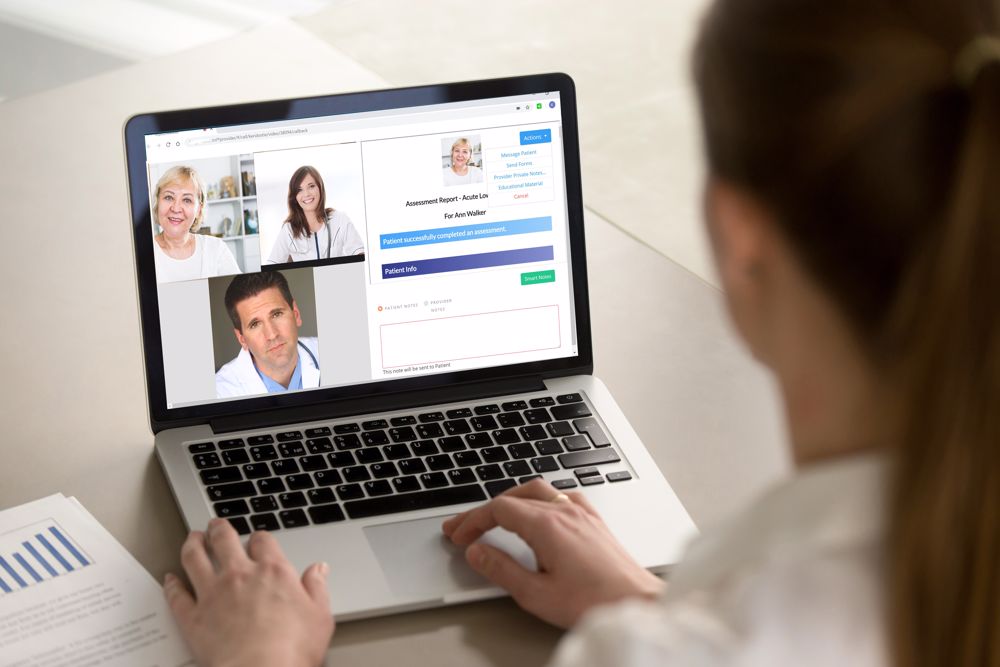As telemedicine continues to make a major impact on the healthcare landscape and care quality altogether, patients are reacting well to this convenient option for care. The pandemic made telemedicine technology more relevant than ever, but its rise in popularity isn't going to slow as things get back to normal. As Medical Economics described it, telemedicine is here to stay, and it's only going to grow from here and become the optimal health service option:
"In the early months of COVID-19's rapid spread across the US, 71% of patients had considered telemedicine while half had already gone through with a virtual appointment. But telemedicine was on the rise long before a pandemic pushed it into the limelight, and projections for the future are bright. Patient adoption at the beginning of 2020 was up 33% over the previous year, while funding has been booming and the market is expected to reach $185.6 billion by 2026."
With this in mind, think about your current care strategy and use of telemedicine. Is your facility pushing boundaries and reaching its full potential to provide a more convenient, efficient opportunity for care delivery? Telemedicine is a valuable tool that can benefit your facility in more ways than one.
Let's take a closer look at the advantages of telemedicine, types of telehealth to consider, specific use cases and how AMD Global Telemedicine can help you deploy your telehealth strategy to encourage more telemedicine visits:

The value of telemedicine
Telemedicine has changed the modern healthcare world as we know it. Living in a world where almost every location has an internet connection, patients are looking for fast and convenient digital options to make their daily tasks easier to achieve, and the same can be said for care providers. The telemedicine revolution has proven that consumers can find a seamless way to receive quality healthcare when they need it most, and physicians can provide said services just as efficiently.
Benefits of taking a telemedicine appointment include:
- Improving access to specialized care. Visiting a specialist generally means traveling a long distance to make the appointment. Telemedicine means you can provide specialized care to the patients no matter where they're located, ensuring your calendar remains full.
- Convenience. Telemedicine means less travel for both the patient and provider. Digital healthcare opportunities turn your traditional visit with a patient (the type that may be more time-consuming in an in-person capacity) and make it more streamlined and seamless to meet with multiple patients within a day.
- Reducing the spread of infectious disease. Let's face it: Doctors and patients get sick, even when they have to provide or receive routine care. Telemedicine reduces infection risk by keeping both the patient and provider out of the doctor's office, making it easier to keep those appointments in the schedule and still provide the care.
Types of telehealth technology
- Video platform with integrated medical devices: Visual contact and clinical assessment are both very important elements of a true telemedicine encounter. "Seeing" a patient virtually truly means putting your eyes on the patient to properly examine them, and not just converse over a telephone call. A secure, cloud-based software that encompasses both the video and medical device components, is critical to ensure the experience matches that of an in-person one.
AGNES Connect®, AMD's premiere clinical encounter software offering, is designed to stream images and data from integrated medical devices and send it to the remote physician simultaneously to the video conference session. Allowing you to share medical device data and exchange documents and medical images in real-time with the remote provider, so they can properly assess their patient.
- Medical cameras, scopes, interactive stethoscopes, vital sign monitors, and other medical devices are helpful tools to have while providing a telehealth solution experience. These devices can ensure that all necessary images and data can be taken in real-time and transferred directly to the specialist on the other end of the video conferencing session.

Innovative use cases for telehealth
Hospital staff, patients and physicians alike are looking for a more convenient care delivery option that still prioritizes quality. A telemedicine visit can do just that. In the current healthcare environment, telemedicine will continue to be a valuable care delivery tool. Here are a few specific examples of ways telemedicine can continue to be used to assist patients and provide an optimal care experience:
- Keeping an "eye" on patients with chronic diseases. Checking on patients with chronic diseases can be a process that's monitored slowly over time, and there's always a chance immediate assistance is needed.
- Bringing high acuity care to the bedside with live remote examinations. Leveraging telemedicine technology to bring in additional specialty care to vulnerable patients at their urgent time of need and transfer medical data in real-time is critical to their well-being.
- Delivering post-acute care to patients in SNF facilities or at home. Treating patients in their current setting eliminates the need for them to be transferred back to the hospital for care. Most non-emergent medical situations y can be easily addressed over telehealth.
- Addressing social determinants of health. Telehealth visits allow patient populations that are struggling to still receive the care they need, without having to take on the cost of time and travel to get to an appointment. So at-risk patients stay healthy, safe and connected to care.
- Promoting oral health through virtual care dental visits. Dental checkups and cleanings are recommended at a twice-a-year cadence to ensure proper dental hygiene. Telemedicine can make it easier for patients to prioritize their oral health by scheduling telehealth appointments when it's more convenient.
Why work with AMD Global Telemedicine
Telemedicine made waves during the pandemic, but that doesn't mean it's a trendy healthcare phase that's going to die out now that things are getting back to normal. The advantages of telehealth solutions play a critical role in how patients feel about their care experience in this new digital light, and the positive reaction shows that many may choose telehealth as their primary option for care moving forward.
Whether your healthcare organization has yet to make the move to the digital landscape or you're simply in need of an upgrade to expand your services, it's time to partner with an industry expert that can roll out your new program. AMD Global Telemedicine can assist on your journey to telemedicine technology improvement, encouraging patients to take advantage of your telehealth visit option.
With 30 years of experience, AMD Global Telemedicine is a pioneer and leader of telemedicine and telehealth solutions. We can help you get started with telemedicine or implement new technologies to ensure we solve common complexities of traditional care and to ensure your patients stay satisfied with their health service experience.
Ready to learn more about our products and solutions? Contact us directly today to learn more about our telehealth technologies and telemedicine programs.





